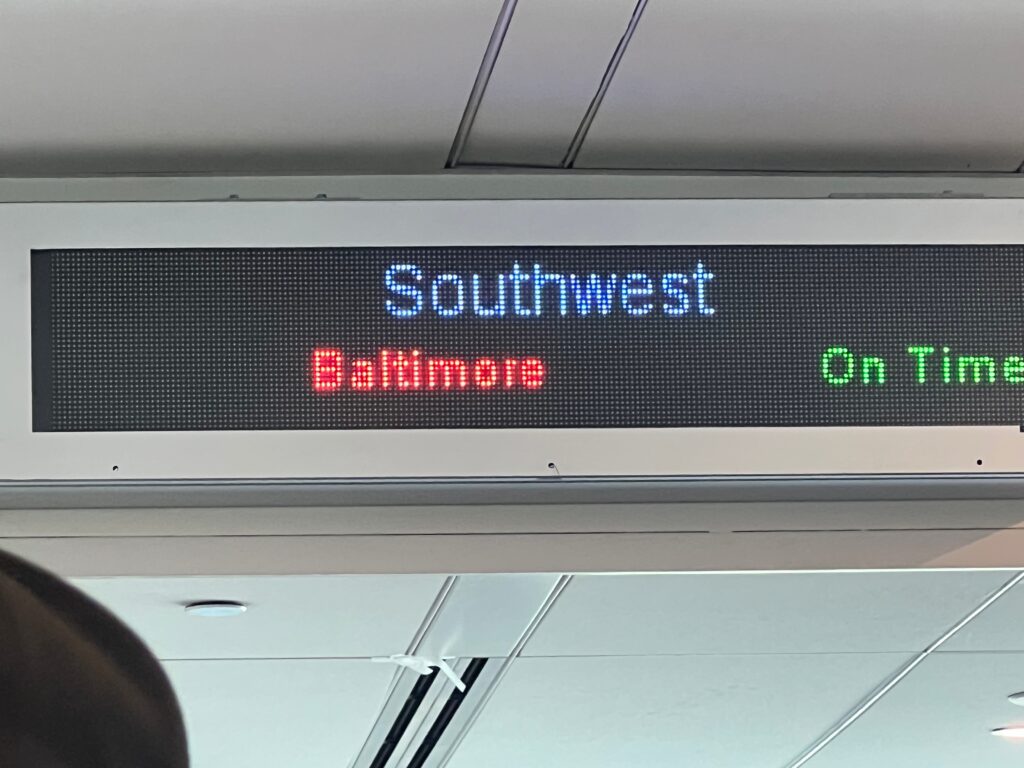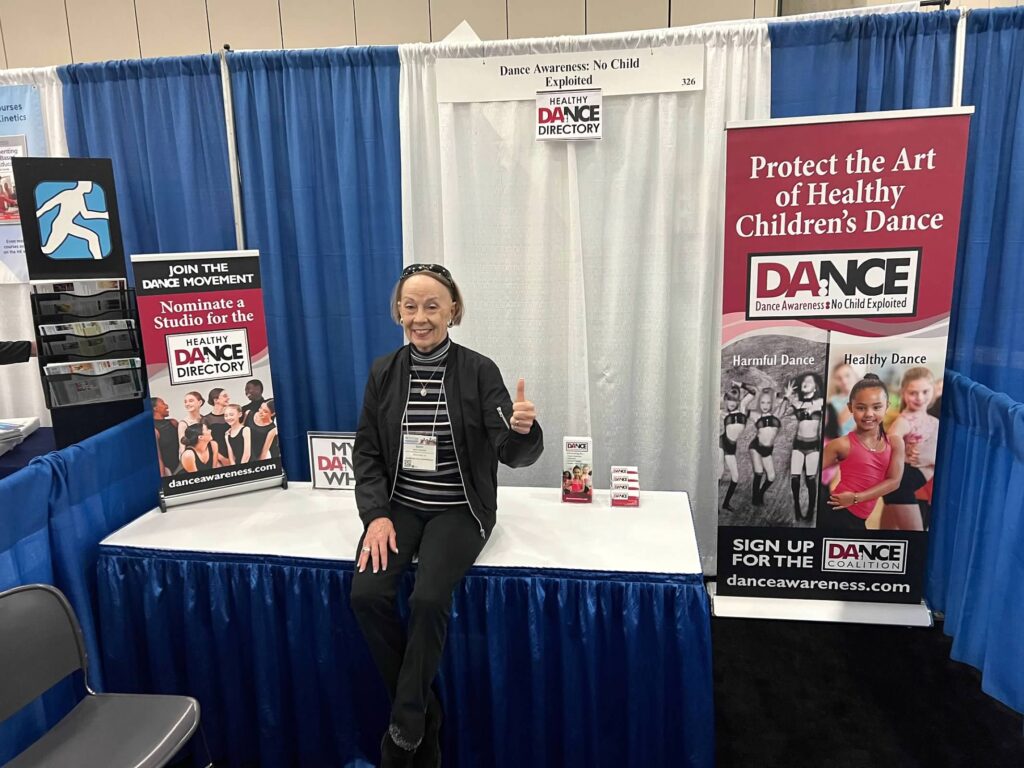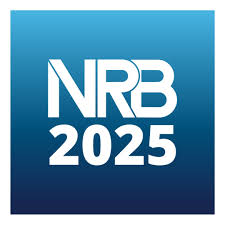2025 is the year that DA:NCE continues to initiate a focus on the traumatic outcomes for harmful children’s DA:NCE. Most adults are still unaware of this issue. Very unaware.
With that focus in mind, I headed to Baltimore Maryland to attend and exhibit at the 2025 National SHAPE(Society of Health and Physical Educators) Conference. Why SHAPE? Simple. This Conference involves professionals who teach dance within the curriculum of physical education at public schools, focusing on the best practices for teaching physical education to children. Some of them are dance educators. All of them know how important it is for children to move in healthy rather than harmful ways.
Along with talking to attendees in the DA:NCE exhibit booth, I attended several sessions centered around child-focused trauma. Even though none of the sessions on trauma were dance specific, the information on trauma had applications to the dance environment. Of course, most of you know that the magic of physical movement classes are that they heal and integrate the body, the mind and the soul. In fact, healthy, educational movement transforms depression. Evidence-based research shows that movement is as effective as medication. Of course, in this arena, healthy dance shines. On the other hand, harmful, hypersexualized dance is loaded with traumatic outcomes.
Awareness and education make the difference leading to informed choices.
Join me on a few of the sessions I attended through my descriptions:
- HEPPS: Healing Through Movement: Integrating Trauma-Informed Pedagogy
Trauma is an overwhelming experience of harm that impacts how bodies navigate the world. The physiological effects of trauma impact individuals’ ability to cognitively and physically regulate when the body is under stress. This session helped physical educators to incorporate information and strategies in methods and/or skills courses to center healing through healthy physical education experiences.
The class focused on self-awareness and emphasized the neurological, cognitive, and psychological impacts of trauma:
Emotional: How are you feeling?
Cognitively: What are you thinking?
Physically: What do you feel in your body?
The class also discussed how movement can promote healing or perpetuate harm (healthy and harmful dance?).
- How trauma impacts the physical education experience
The field of physical education has been talking more and more about trauma as it affects the brain:
Being supported through an emotionally safe, nurturing, and calm relationships with a teacher allows a child to settle into safety unless we enter into trauma-savvy pedagogy. What is that? It’s an environment where we are actively causing trauma[actively unsafe, trauma-inducing]. As educators we were asked to go from trauma ignorant to trauma aware to trauma sensitive. Sometimes a child is in so much stress that we need to intervene with safety concerns and action. What we do affects the development of a child’s brain: Neuroplasticity in the brain allows for profound changes and healing to occur when a child is placed in the right environment; this can override past negative repetitious experiences.
Then, what else can caring adults do?
-build relationships
-keep your cool
-look at behavior through a trauma-informed lens
- Share shape and swap strategies to enhance student mental health
This session aimed to create a dynamic dialogue that not only inspired but also equipped educators with practical tools to support and uplift students in their mental health journey. By incorporating these strategies, educators could create a culture prioritizing mental health and well-being.
We learned that kids need to focus on a trusted adult for support. How can we become that adult? How do we show empathy? At the very least, one proven tactic to use is to summarize what a child is feeling. - Spirituality: Coaching with Meaning This session had a focus on the joy of play rather
than rules, regulations and winning. A coach[or dance educator] can be a healer, a reminder of the good of sport[or movement], and a guide to the paradise of play. This session spoke personally to me through memories. Along with dance, I coached soccer for 10 years when my kids were growing up😊
This child-oriented session emphasized the Crisis of Play:
Not fun anymore
Burnt out kids
Loss of healthy purpose
Pressure
Too many games; practice, practice, practice
Decrease of real play at a young age
Interestingly, the speakers also dealt with the issue of trauma versus the joy of experiencing play because of expectations: adult pressure, competition, and a trajectory into perfectionism. Here’s an article that is dance specific.
It’s our job as caring adults to reflect and to make changes in dance environments that allow young children to thrive in the classroom. Dance should not be traumatic. As a child, I was blessed to ‘play’ as I danced because of my wonderful teachers coupled with an adult culture that looked out for me.


Let’s join together to communicate that same message.





